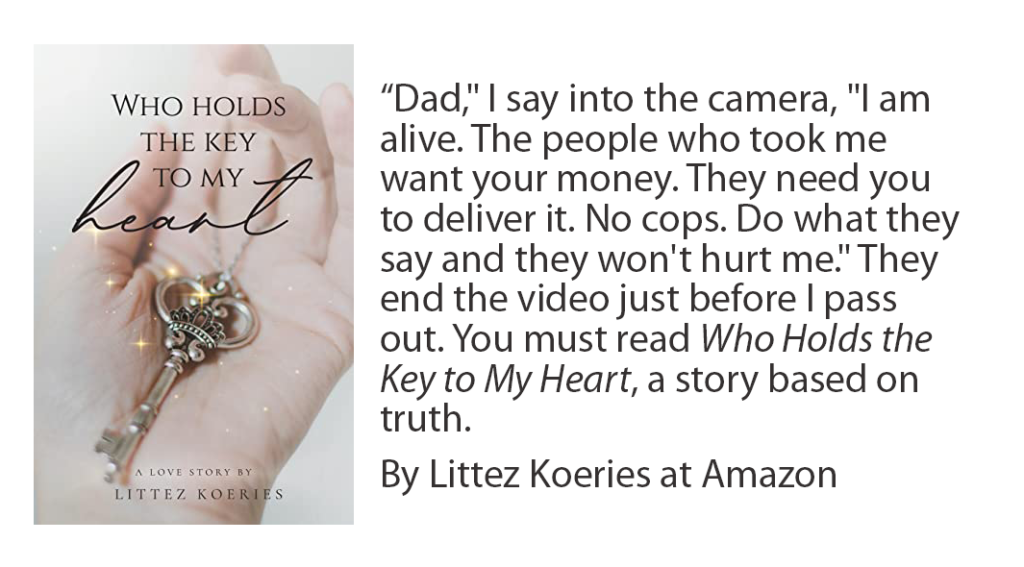Grow an audience with careful planning and execution
Growing your micro businesses and social media at the same time is challenging. Social media is an integral part of our lives. It has revolutionized how we connect with people, share information, and do business. For micro business owners, social media provides an excellent opportunity to grow their business, reach new customers, and engage with their existing ones. However, using social media effectively requires careful planning and execution. This article will discuss how micro business owners can use social media to grow their business, provide a list of popular social media sites, and discuss how to register on them. We will also highlight some cautions about safe surfing on social media.
Why micro businesses and social media are a perfect match
Social media has become a powerful tool for micro-business owners to promote their businesses and engage with customers. Here are some benefits of using social media for micro businesses:
- Cost-effective: Social media is a cost-effective way to promote your business. Most social media platforms are free to use, and even if you choose to advertise, the cost is generally much lower than traditional advertising methods.
- With over 4.2 billion users worldwide, social media provides a massive audience for micro businesses to reach out to. Social media platforms allow you to target specific demographics, making it easier to reach your ideal customer.
- Social media provides an opportunity to engage with customers and build relationships. You can respond to customer inquiries, provide updates, and share valuable content. You can create a page for your business, set up a user group, and use marketing campaigns.
- Social media allows you to create a brand identity and build brand awareness. You can showcase your products or services, share your business story, and highlight customer testimonials. You’ll want to use consistent logos, images, and graphics, so people associate your brand with a specific positive experience.
- Social media calls to action are a great way to drive traffic to your website or storefront.
Micro businesses and social media: which platforms?
- Facebook: With over 2.8 billion active users, Facebook is the most popular social media platform. It provides an excellent opportunity for micro businesses to connect with customers, share content, and promote their business. To register, visit and click “Create New Account” at the top of the page.
- Instagram: Instagram has over 1 billion active users, making it a popular platform for visual content. Micro businesses can use Instagram to showcase their products or services, reach new customers, and engage with their audience. Business owners report high engagement across this platform. Download the Instagram app on your phone and follow the instructions to register.
- Twitter: With over 330 million active users, Twitter is a popular platform for businesses to engage with customers and promote their business. Micro businesses can use Twitter to share updates, news, and content. However, with the recent turmoil over ownership and rules, it may be best to adopt a wait-and-see stance with Twitter. To register, visit and click “Sign Up” at the top of the page.
- LinkedIn: LinkedIn is a professional social media site with over 740 million users. It’s an excellent platform for micro businesses to network, connect with other professionals, and promote their businesses. It seems more difficult to build an audience of following here, and it is oriented to larger businesses, but since there is no cost, you might as well explore LinkedIn. To register, visit and click “Join now” at the top of the page.
- YouTube: With over 2 billion monthly active users, YouTube is the second most popular search engine after Google. It’s a great platform to share video content, tutorials, and product demos. YouTube is hugely popular, especially with 20 to 45-year-olds. You can monetize your YouTube account if you grow a big enough audience. Using YouTube requires much more of a time commitment than other socials. To register, visit and click “Sign in” at the top of the page.
- Pinterest: Don’t overlook Pinterest as a business tool. The business account offers many tools to expand your reach. You can sell products. You can stand out if you add content consistently. On one of our sites, we drew more traffic on Pinterest than on any other platform. Join here.
Cautions about safety on social media
While social media is essential for micro-businesses to grow competitively, safety is something to consider. Here are some cautions to keep in mind:
- Protect your personal information: Be careful about sharing personal information on social media, such as your address, phone number, or financial information. It’s advisable to have a dedicated business phone and email address.
- Be aware of scams: Social media is a common platform for scammers to target unsuspecting users. Be cautious of unsolicited messages and offers that seem too good to be true. Be wary of randomly clicking links or responding to surveys and quizzes.
- Watch out for fake news: Social media can be a breeding ground for fake news and misinformation. Be cautious of news stories that seem sensational or unlikely.
- Monitor your online reputation: Your online reputation is important for your business. Keep an eye on reviews and comments, and respond promptly to any negative feedback. It’s never a good idea to sell your users’ or followers’ information, though it may be tempting.
- Change your password regularly, and if the platform, like Facebook, offers a safety audit, use it.
Creating engaging social media content
Know your audience: Understanding your target audience makes creating content that resonates with them easier. Consider their interests, behaviors, and pain points. You might want to create reader polls or surveys to closely monitor what your audience needs.
- Use visuals: Visual content such as images, videos, and infographics are more engaging than plain text. Use high-quality visuals relevant to your content to attract attention and make posts more shareable.
- Tell a story: Storytelling is a powerful tool for creating engaging content. Use stories to connect with your audience, evoke emotions, and make your content more memorable. Add a personal touch by sharing your own anecdotes.
- Provide value: Offer valuable information, tips, and insights that your audience can use. This will position you as an expert in your field and encourage your audience to engage with your content. All successful social accounts provide a service, answer questions, or add value for users.
- Use humor: Humor is a great way to make your content more engaging and shareable. However, be careful not to offend anyone or use inappropriate humor that could damage your brand.
- Use hashtags: Hashtags are a useful tool for increasing the visibility of your content. Use relevant hashtags, consistent with your goals, to make your content more discoverable and attract new followers.
- Ask questions: Asking questions is a great way to encourage engagement with your audience. Ask open-ended questions encouraging discussion and invite your audience to share their opinions. Comment on readers’ responses when you can.
- Be consistent: Consistency is key when it comes to creating engaging content. Post regularly and at a similar time daily to build a loyal following and keep your audience engaged. You can help readers develop a habit of looking for your updates.
Micro businesses and social media: content creation mistakes
- Not having a clear strategy: Avoid creating content without a clear strategy in mind. Without a strategy, it’s easy to lose focus and create posts that don’t resonate with your audience or align with your business goals.
- Ignoring your audience: Another mistake is creating content that doesn’t resonate with your audience. It’s important to understand your audience’s interests, behaviors, and needs to create content that engages them. Monitor your posts to see what people respond to.
- Being too promotional: Social media is not the place for constant self-promotion. If all you do is promote your products or services, your audience will likely tune out. Everyone resents spam. Instead, focus on creating content that provides value and builds relationships with your audience.
- Each social media platform has its own unique features and audience. Optimizing your content for each platform to maximize engagement and reach is important.
- Visual content is more engaging than plain text. Use high-quality images, videos, and graphics to make your content more engaging and shareable. GIfs and memes, used appropriately, are popular with social media users.
- Posting inconsistently: Consistency is key when it comes to social media. If you post sporadically, your audience is likely to forget about you. Create a posting schedule and stick to it to build and keep a loyal following.
- Social media analytics provide valuable insights into your audience’s behavior and engagement with your content. Do some homework to figure out how these tools work. Use the data to refine your strategy, optimize your content, and improve your results.
Visual content is powerful for engaging on social media: Effective ways to do it
- High-quality images are a must for creating engaging social media content. Use images that are relevant to your content and of good quality to make an impact on your audience. Try for colors that pop, images that feel engaging, and glyphs or emojis that connect to your story.
- Videos are powerful. Use videos to showcase your products or services, share tutorials, and provide behind-the-scenes glimpses of your business. Don’t overwhelm your stream with too many videos, but use them to enhance a sense of deep content. Watch out for stealing copyrighted material. You can ask a video’s owner for permission to use a video and give that owner credit.
- Infographics are a great way to present complex information in a visually appealing way. Use infographics to share statistics, data, and other information that can be challenging to convey in text form.
- Add text overlays: Text overlays can be a great way to add context to your visuals. Use text overlays to highlight key points, add captions to videos, or provide context to images.
- Create memes: Memes are a popular form of visual content that can be used to inject humor into your social media content. Use memes to add a touch of personality to your brand and engage your audience.
- Use user-generated content: User-generated content, such as photos and videos created by your customers can be a powerful tool for building brand awareness and engagement. Use user-generated content to showcase your products in real-world settings and encourage your audience to share their experiences with your brand. It’s effective to ask followers to share pictures of themselves engaged with your product or your feed.
Winning with user-generated content
- Create a branded hashtag: Creating a branded hashtag is a great way to encourage your audience to share user-generated content. Use a unique and memorable hashtag that represents your brand and encourage your audience to use it when sharing their content.
- Offering incentives such as discounts, free products, or a chance to be featured on your social media channels can be a powerful way to motivate your audience to share their content.
- Showcase user-generated content: Sharing user-generated content on your social media channels can be a powerful way to encourage your audience to do the same. Share user-generated content that aligns with your brand and values, and tag the original creator to give them credit.
- Host a contest encouraging your audience to share their ideas, pictures, or posts. It can be a great way to generate engagement and build brand awareness. Ensure the contest aligns with your brand and values and offers a meaningful prize to motivate your audience to participate.
- Engage with your audience: Engaging with your audience can be a powerful way to build relationships. Respond to comments and messages promptly, ask for feedback, and show appreciation for their support. Use people’s names in context.
Here are some tips for creating a branded hashtag that resonates with your audience:
- Your hashtag should be easy to remember and type. Keep it short and simple, and avoid using special characters or complicated words.
- Your hashtag should be unique to your brand and not already used by others. Do a quick social media search to ensure your hashtag is not already in use.
- Your hashtag should align with your brand and values. Consider your brand personality, tone of voice, and target audience when creating your hashtag.
- Use a call to action in your hashtag that encourages your audience to participate. For example, #ShareYourStory or #JoinTheMovement. In fact, use calls to action wherever they fit appropriately.
- Before launching your hashtag, test it out with a small group of people to make sure it resonates with your audience and aligns with your brand.
- Once you’ve created your branded hashtag, use it consistently across all your social media channels. Make sure to include it in your bio, posts, and stories.
- Use social media analytics to track the performance of your hashtag over time. Monitor engagement, reach, and sentiment to see how well your hashtag resonates with your audience.
We all use social media in our personal lives, and micro-businesses and social media are an even better fit. According to data gathered by SCORE, 77% of small or micro businesses use social media to help build brand awareness, facilitate customer service, and expand reach. You can grow an audience a lot faster with the reach of social media. When people can see that you care about your micro-business, they’ll follow and care about you, too. You might want to experiment with generating posts with artificial intelligence and use an automated scheduling tool to minimize the time commitment.
Learn more
The Accessible Side Hustle
New Social Media Platforms
8 Best Twitter Replacements




